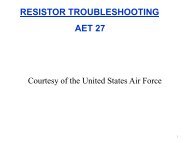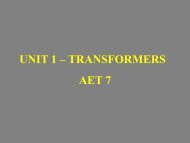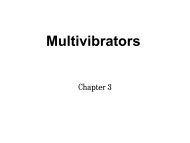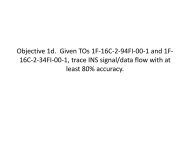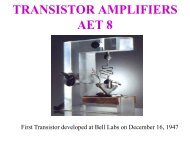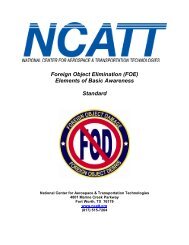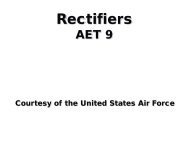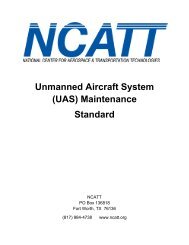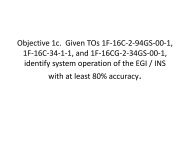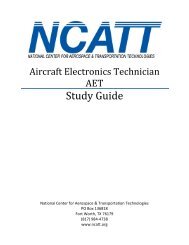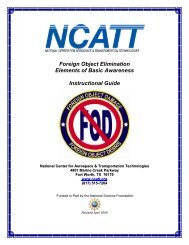(AET) Study Guide - NCATT
(AET) Study Guide - NCATT
(AET) Study Guide - NCATT
- No tags were found...
You also want an ePaper? Increase the reach of your titles
YUMPU automatically turns print PDFs into web optimized ePapers that Google loves.
Page 23 of 51• NOR Logic Gate—Means NOT OR. The NOR logic gate has two or more inputs and oneoutput. It is usually followed by an inverter.• NAND Logic gate—Means NOT AND. The NAND logic gate has two or more inputsand one output. It is usually followed by an inverter.• EXCLUSIVE OR Logic Gate—The EXCLUSIVE OR logic gate requires inputs to bedifferent to obtain an output.14. Digital Logic Functions <strong>NCATT</strong> Training Standard Level (B)(b) Flip-flopsObjective:Identify the relationship of basic facts and state general principles about digital logic functionsutilizing flip-flops.Content – Flip-flops:Discuss the advantages and disadvantages of flip-flops. Explain the use and operation of flipflopswith reference to the following terms:• Flip-flop—Bi-stable (stable in either of two alternative states) or static memory elementused to store information. Bi-stable means one output for the normal value and oneoutput for the complement value of a stored bit.• Latch—Two cross-coupled NAND or NOR logic gates where the output of each gate isapplied to the input of the other gate. A latch can have data input, clock input, and output.• R-S Latch—Two cross-coupled NOR logic gates where supplying a 1 at either inputcauses the output to be 0.• Data-type Latch—Stores the status of its "D" input whenever the clock input makes acertain transition (low to high or high to low). Latch input is fed from its own invertedoutput.• Clock Pulse—Pulse generator used to synchronize the timing of switching circuits. Theclock determines when certain actions can occur in a digital system.• J-K Flip-flop—During clocking, the inputs and outputs toggle between 1 and 0.• Asynchronous—Change occurs at a speed determined by circuit functions, not a timingdevice.• Synchronous—Change occurs at the same instant using a timing device.14. Digital Logic Functions <strong>NCATT</strong> Training Standard Level (B)(c) CountersObjective:Identify the relationship of basic facts and state general principles about digital logic functionsutilizing counters.Copyright © 2008 by the National Center for Aircraft Technician Training. All rights reserved.Individuals may download, print, and make copies of this documentfor their own personal use. Commercial use prohibited.




